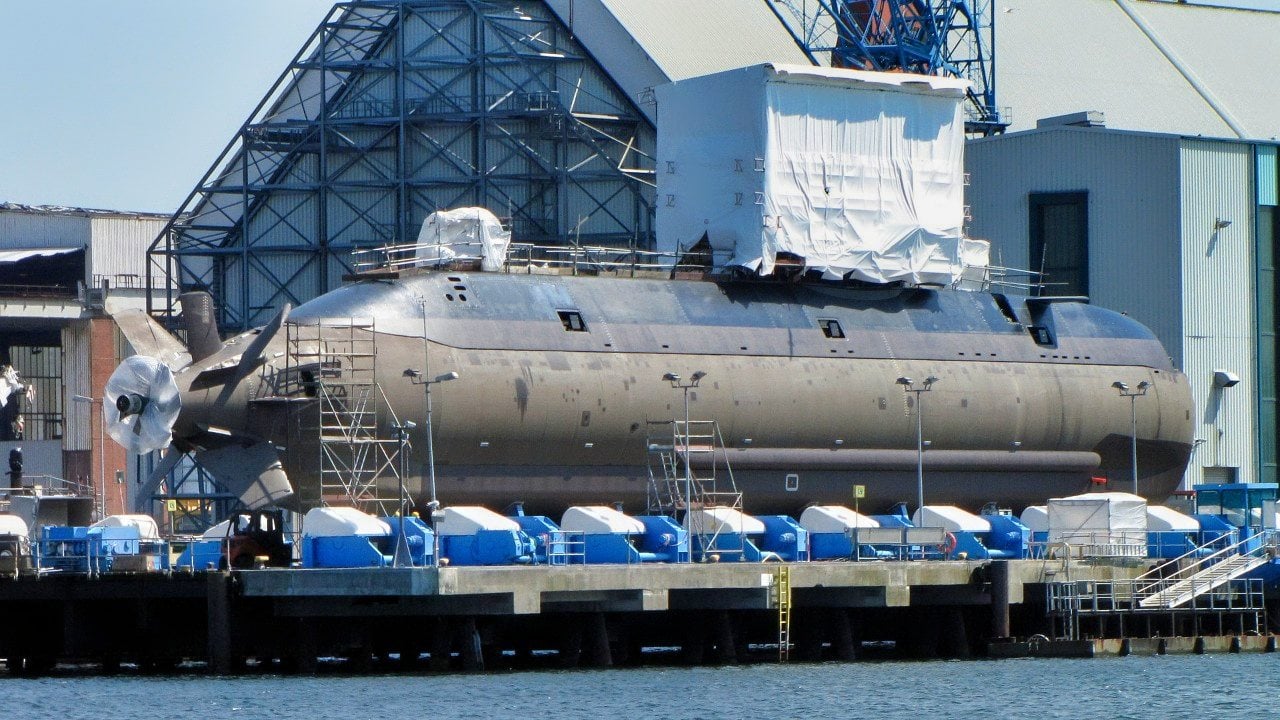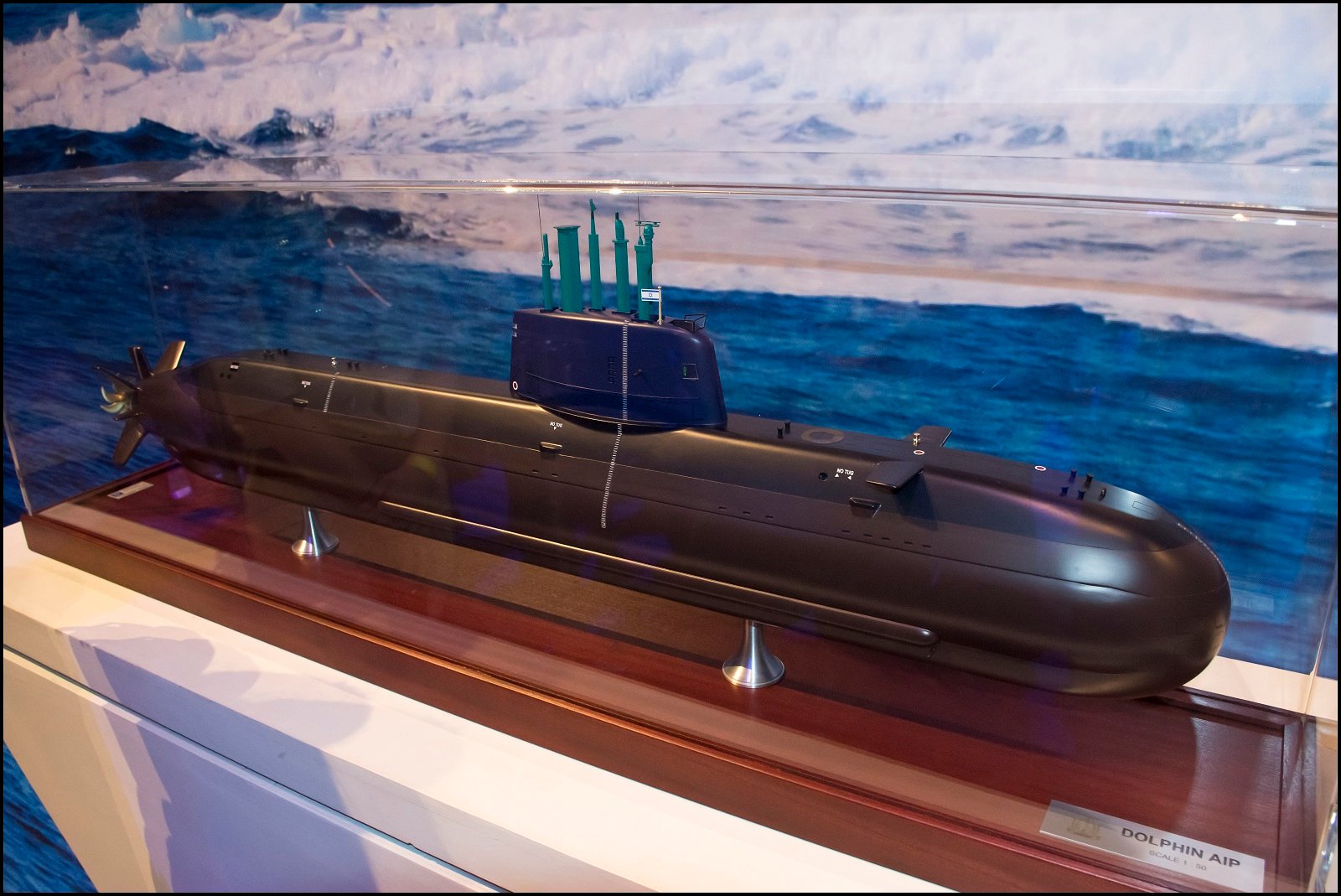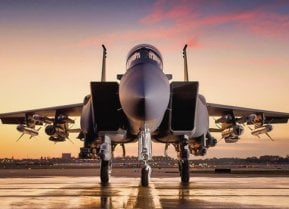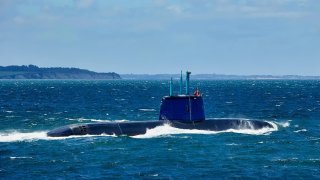Dolphin-Class: Israel Has a Fleet of Nuclear Missile Submarines?
There has been much speculation that all of the Dolphin-Class boats have been refitted to carry missiles armed with nuclear weapons for the country to maintain a survivable second-strike option. Berlin has refused to comment on whether it had modified the Dolphin-class submarines delivered to Israel to fit cruise missiles armed with nuclear warheads.
Dolphin-Class: How Israel Could Start a Nuclear War Thanks to Submarine-Launched Missiles - Though the Egyptian Navy is the largest in the Middle East, the State of Israel has a naval force that shouldn't be taken for granted with 9,500 active personnel and another 10,000 reservists. It has seven corvettes of the Sa'ar 5 and Sa'ar 6 class, eight Sa'ar 4.5 class missile boats, and 45 patrol boats.
In addition, Israel maintains a fleet of five German-made diesel-electric submarines, which are believed to be capable of carrying cruise missiles that have a range of at least 1,500 km (930 miles) and are equipped with 200 kiloton nuclear warheads. If that is accurate, Israel would be one of just a handful of nations that has offshore nuclear second-strike capability.
Dolphin-Class: Very Secret Program
As noted naval analyst H I Sutton reported in August, the Israeli Navy is known for the secrecy surrounding its submarine force – and its actual capabilities aren't clear. However, it was that same month that the sixth Dolphin-I/II class submarine was launched in Kiel, Germany.
The launch of INS Drakon (Dragon) indicates a significant growth in Israel's submarine capabilities. It is a variant of the already successful Dolphin-II class – longer than the previous two Dolphin-II boats, but as Sutton added, "Even more noticeable is the ginormous sail. This likely contains its defining feature: advanced new missiles."
All were designed and constructed by Germany’s Howaldtswerke-Deutsche Werft.
History of Israel Submarines
Israel had first acquired two British S-class submarines in the late 1950s, and those remained in service throughout the 1980s, seeing use in the wars in Lebanon. However, the boats were noisy and not ideally suited for service in the Mediterranean Sea.
After those subs were retired, the Israeli Navy employed three Gal-class submarines, which were designed by Germany for Israel, and constructed at the Vickers Shipyard in the United Kingdom between 1973 and 1977. Those boats were a modified version of the Type 206A coastal sub.
In the early 2000s, Israel commissioned three Dolphin-class submarines from German company HDW – with Berlin donating two of the vessels while it split the cost for the third with Israel.
Nuclear Capabilities?
The fourth and fifth German-built submarines, which were agreed to in 2006, were developed as an advanced Dolphin-class vessel equipped with air-independent propulsion (AIP). The INS Tanin was commissioned in September 2014 while the INS Rahav was commissioned two years later.

There has been much speculation that all of the Dolphin-I/II boats have been refitted to carry missiles armed with nuclear weapons for the country to maintain a survivable second-strike option. Berlin has refused to comment on whether it had modified the Dolphin-class submarines delivered to Israel to fit cruise missiles armed with nuclear warheads.
In addition, Sutton reported in January 2022 that the INS Drakon – which was undergoing its sea trials – may have been fitted with a vertical launch system (VLS), while he further noted that the cost of the submarine, along with the next two being built, had increased significantly. The newest of the Dolphin-II boats is expected to replace the older three Dolphin-I models.
These would be only the second modern AIP-equipped submarines in the world designed with the VLS capability – with the first being the South Korean KSS-III class, which has only recently entered service. The two classes can be seen as part of a wider trend to fit VLS on conventionally powered submarines, Sutton explained.
The AIP system could enable the vessels to travel extremely quietly and to remain submerged for up to a week without surfacing. The boats are reported to have a maximum speed of 25 knots and a range of 4,500km. In addition to the VLS, the submarines are equipped with four enlarged 650mm torpedo tubes. The Israeli boats were initially armed with Atlas Elektronik DM2A3 torpedoes using wire-guided active homing to deliver a 260 kg (570 lb) warhead at a maximum speed of 40 knots (74 km/h; 46 mph) to a target over 13 km (8.1 mi) away, in passive homing mode a speed of 22 knots (41 km/h; 25 mph) and a range up to 28 km (17 mi).
In 2016, it was also revealed that a new sonar developed by Rafael Advanced Defense Systems had begun to be fitted on all Dolphin submarines. The new capabilities provided to the Dolphin submarines by the Israeli sonar could provide for detection of vessels with a low noise signature. Moreover, the algorithms used in the sonar systems enable it to ignore many of the noises that can disrupt the range of the systems' activity, while detecting very distant noises.

A wet and dry compartment is also believed to have been installed on the Dolphin subs for deploying underwater special operations teams.
Israel's submarine force is normally based in the Mediterranean, but at least one of its boats was sent to the Red Sea for exercises and docked at the naval base in Eilat in June 2009 as a warning to Iran.
Author Experience and Expertise
Peter Suciu is a Michigan-based writer. He has contributed to more than four dozen magazines, newspapers, and websites with over 3,200 published pieces over a twenty-year career in journalism. He regularly writes about military hardware, firearms history, cybersecurity, politics, and international affairs. Peter is also a Contributing Writer for Forbes and Clearance Jobs. You can follow him on Twitter: @PeterSuciu.
All images are Creative Commons.


